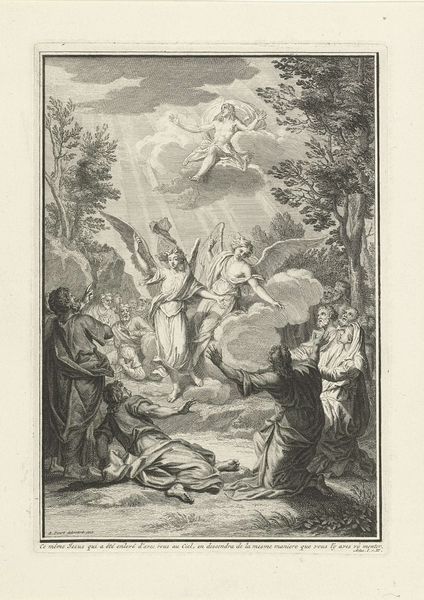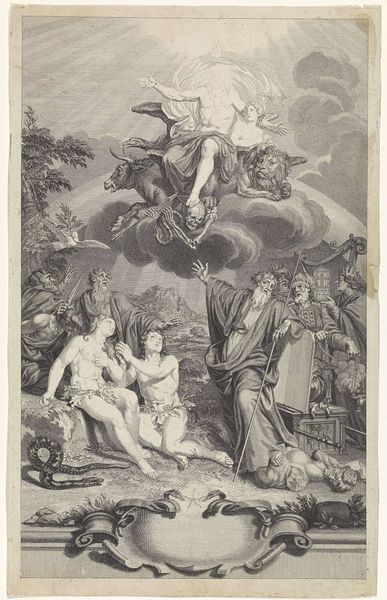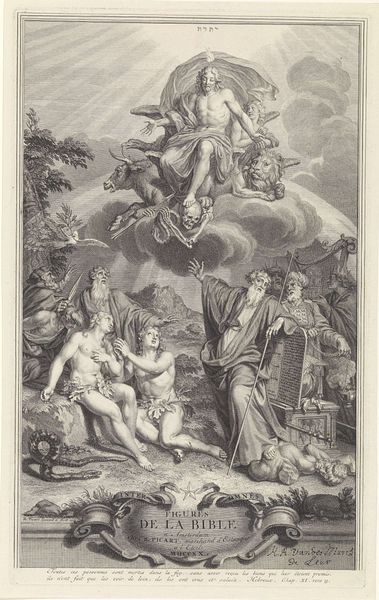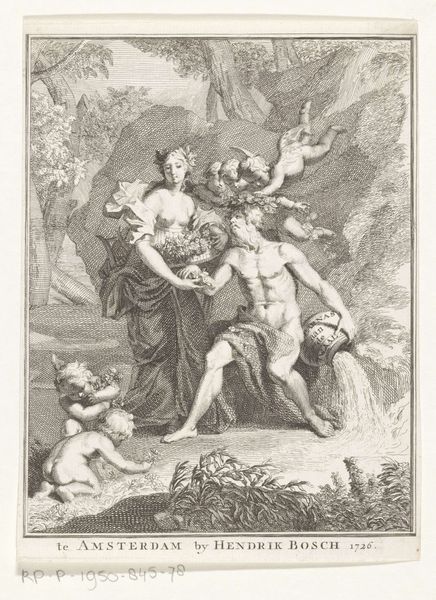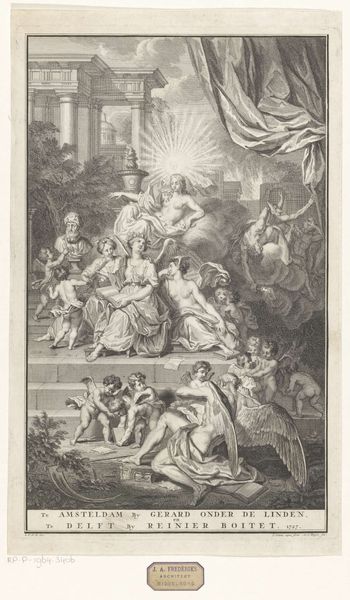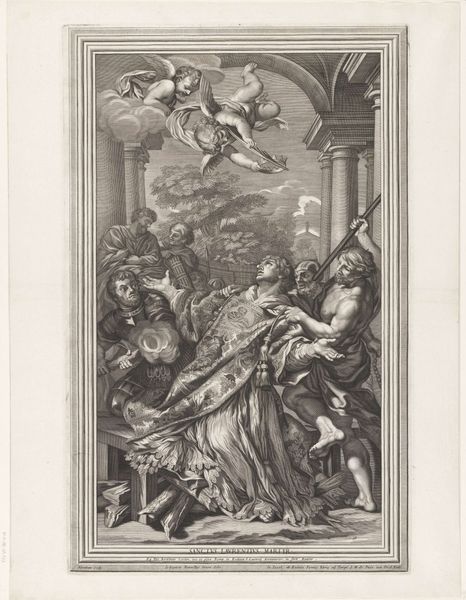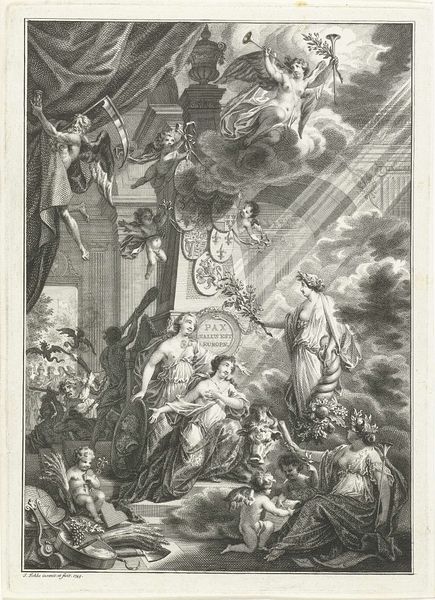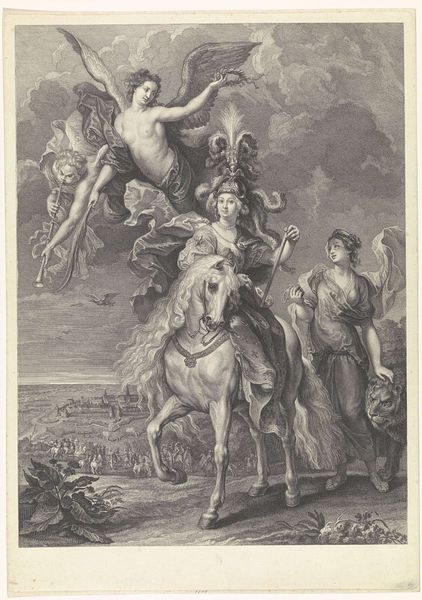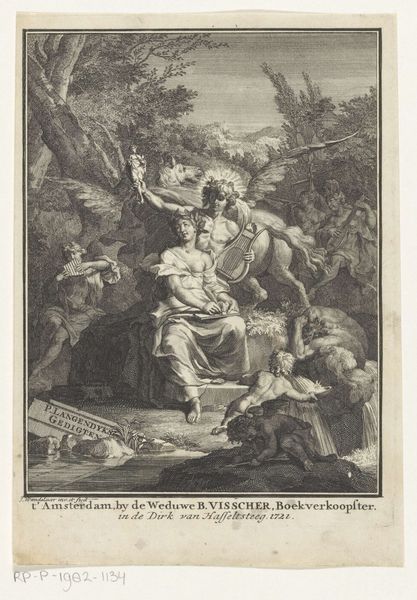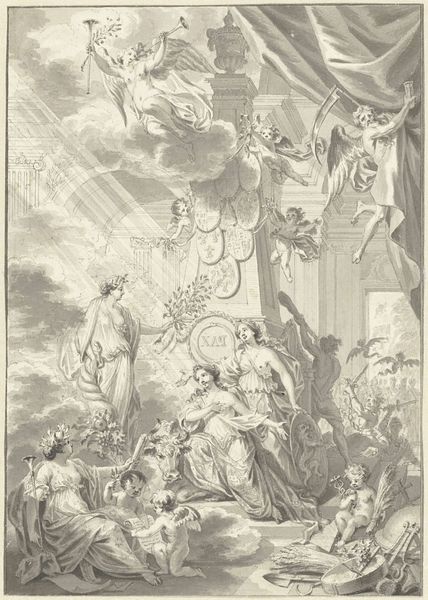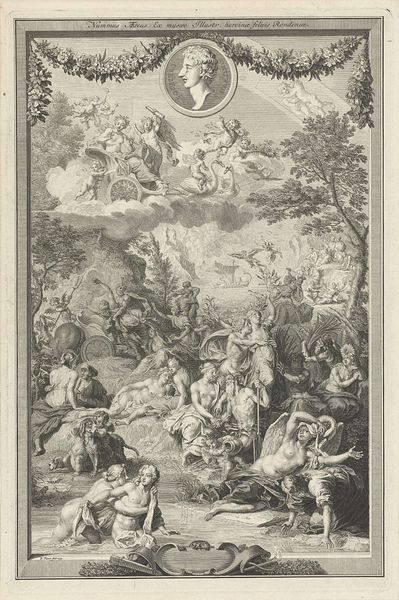
engraving
#
allegory
#
baroque
#
old engraving style
#
figuration
#
history-painting
#
engraving
Dimensions: height 220 mm, width 153 mm
Copyright: Rijks Museum: Open Domain
Bernard Picart created this engraving, "Christ Appears to the Personifications of the Continents," sometime between 1696 and 1733. The work visualizes the global aspirations of European Christianity. Seated on a cloud and attended by angels, Jesus floats above figures representing Europe, Asia, Africa, and the Americas. These personifications, identified through symbolic props such as a camel and a lion, direct their gaze upwards toward the Messiah. Picart’s engraving reflects the cultural and political context of its time; the period of colonialism. European powers sought to expand their influence across the globe, often under the guise of spreading Christianity, while, in reality, the expansion was more about commercial interests. Picart's image idealizes this mission, presenting it as a divine encounter that brings diverse peoples under the benevolent authority of Christ. To understand this work better, examine the historical connections between religious institutions and colonial powers. Consider how images like this were used to legitimize European expansion and reflect on the legacies of colonialism.
Comments
No comments
Be the first to comment and join the conversation on the ultimate creative platform.
